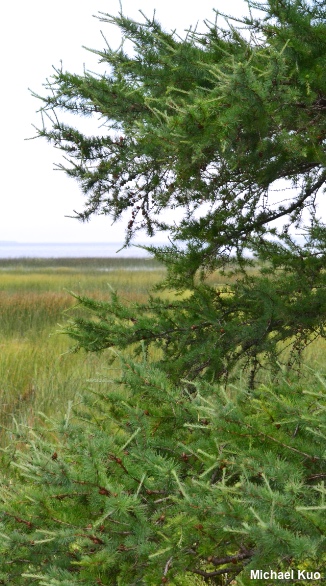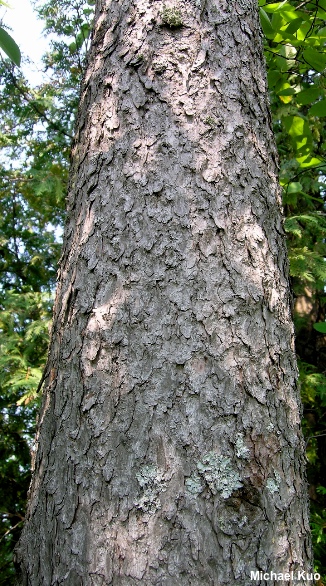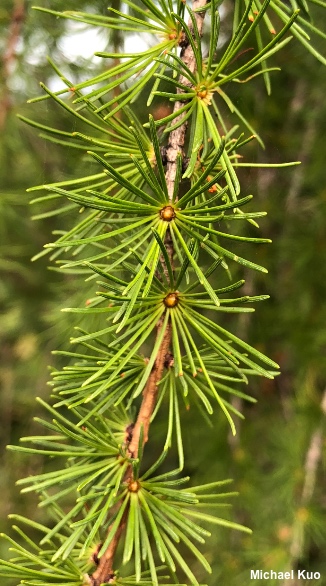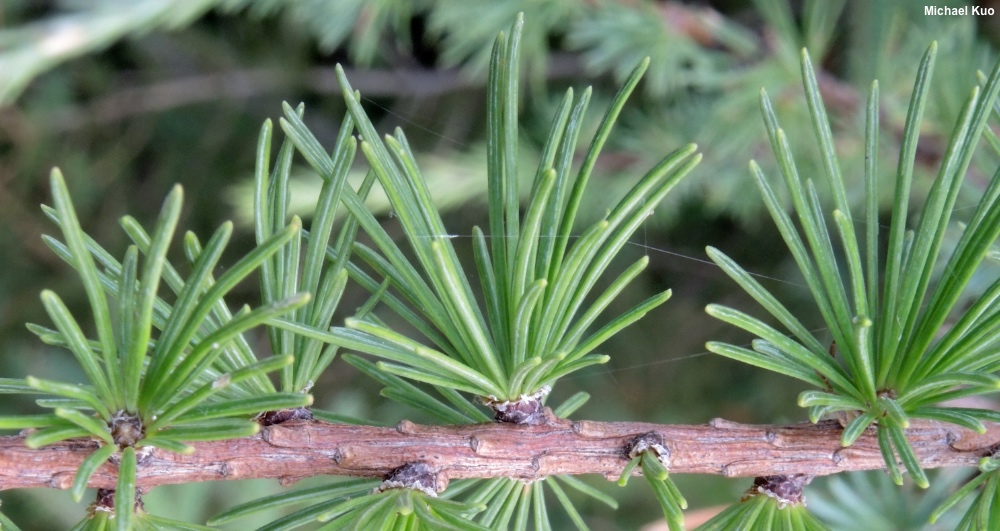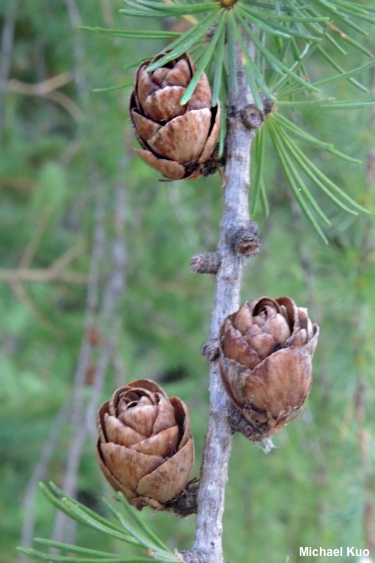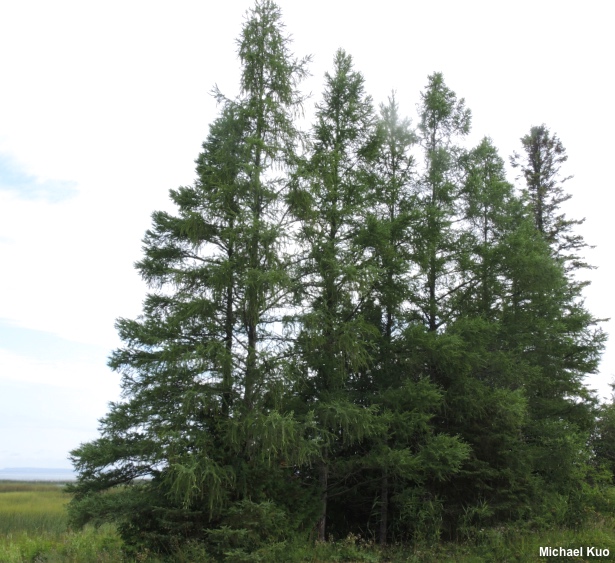 Larix laricina (tamarack, eastern larch) |
|
Tamarack, or eastern larch, is a conifer of swampy boreal ecosystems, best recognized by its needles, which emerge in clusters from little branch spurs. Unlike most conifers, tamarack is deciduous, shedding its needles in the fall; tamarack bogs look decidedly dreary and "dead" in the winter. In the Pacific Northweswt tamarack is replced by western larch (Larix occidentalis), which is much taller and skinnier and features slightly longer needles, along with cones that have projecting bracts. In the northern Rocky Mountains, subalpine larch (Larix lyallii) can be found at high elevations; like western larch its cones feature projecting bracts, but it is a smaller tree, often stunted due to the harsh environment. European larch (Larix decidua) is sometimes cultivated in North America and can be found in urban settings. Mycorrhizal mushrooms associating exclusively with tamarack include Suillus ampliporus, Suillus clintonianus, and Suillus spectabilis. Saprobes include Trichaptum laricinum. |
|
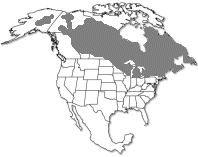
|
|
|
|
|
|
|
|
|
|
|
|
Kuo, Michael (October, 2021). Larix laricina (tamarack, eastern larch). Retrieved from the MushroomExpert.com website: www.mushroomexpert.com/trees/larix_laricina.html All text and images © , mushroomexpert.com. |
